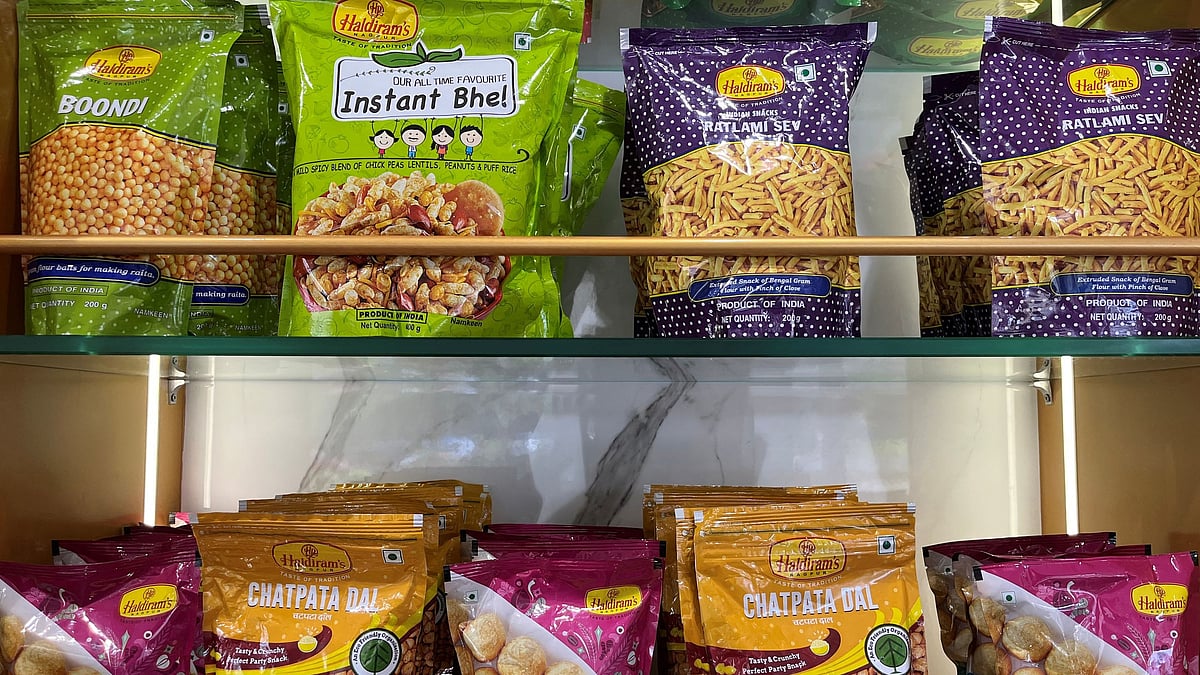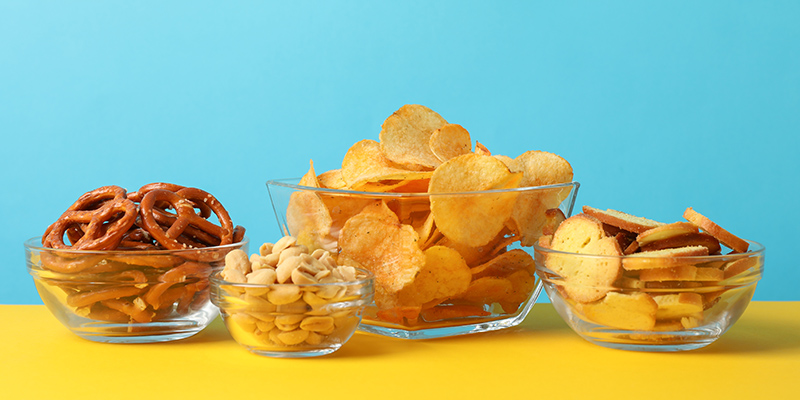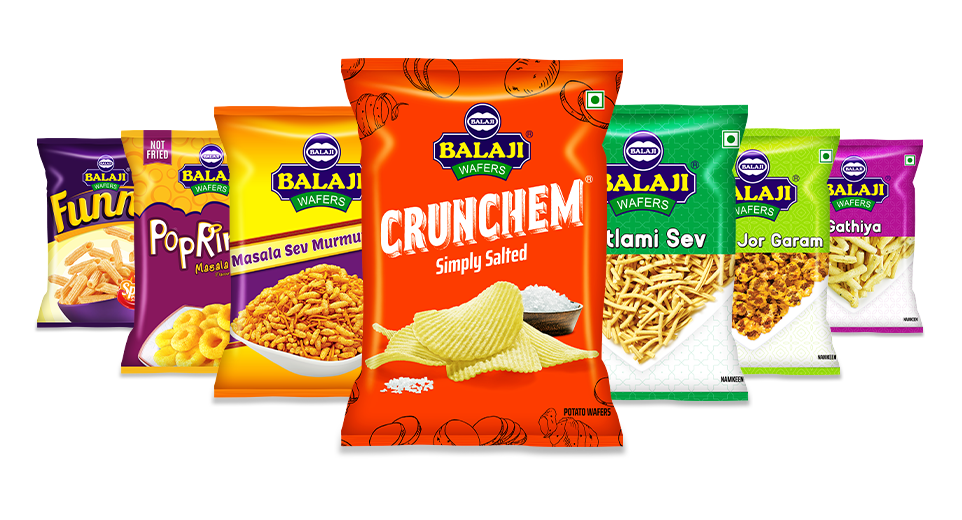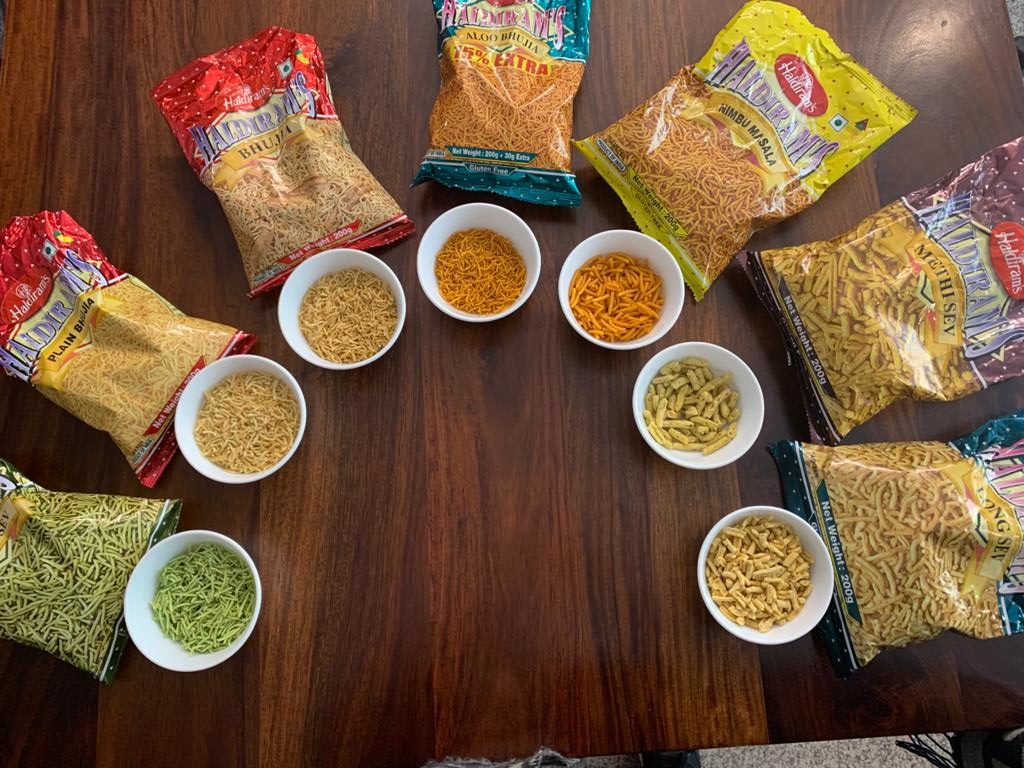Tata And Haldiram’s Deny Negotiations; However, Tata’s Potential Acquisition of Haldiram’s Would Prove To Be A Game Changer in the Snack Industry!
The Indian snack and food industry is abuzz with speculation about the possibility of Tata Consumer Products acquiring a majority stake in Haldiram's, a revered name in the realm of Indian snacks and sweets. While Tata and Haldiram have officially denied such negotiations, the mere contemplation of this colossal deal has ignited discussions among industry insiders and market observers. What would be the potential ramifications of Tata's acquisition of Haldiram And its impact on competitors within the segment? We work on this hypothetical scenario and analyze the possible consequences for other players in the Indian snack industry. It would be nothing short of a 'run for the money'!

Tata And Haldiram’s; A Yes Or A No
The markets were abuzz with the news that Tata’s may be in talks with Haldiram to acquire the latter; however, in recent developments, Tata Consumer Products has vehemently denied reports suggesting a $10 billion acquisition of a majority stake in Haldiram’s, one of the most renowned Indian snack manufacturer and so has Haldiram’s.
Despite the official denials, the mere speculation of such a colossal deal has ignited intrigue and discussion among industry insiders and market observers.

The Hypothetical Scenario
If we were to take this hypothetical scenario where Tata indeed acquires a 51% stake in Haldiram, this would signify a significant move for Tata and have far-reaching implications for both companies, their market shares, and the broader competitive domain within the snack industry.
What would it mean for the Tata Group?
Portfolio Diversification: There is little doubt that a successful acquisition of Haldiram’s would diversify Tata’s portfolio by adding a major player in the snack food segment. This could potentially help Tata Consumer Products reduce its reliance on its existing product lines and expand its reach in the fast-growing snack market.
Market Share Boost: Currently, Haldiram’s holds a substantial market share in India’s snack market, boasting a 13% share of a Rs 51,553 Crores industry. Tata’s entry into this space would not only strengthen its market presence but also enable it to compete more effectively with rivals such as Reliance Retail and Pepsi.
FMCG Expansion: Tata, already a player in the FMCG (Fast-Moving Consumer Goods) sector with brands like Tetley and partnerships with Starbucks, would further consolidate its position as a major FMCG player in India.

Impact on Haldiram’s
Valuation Justification: The proposed acquisition at a valuation of $10 billion, approximately 6.6 times Haldiram’s annual revenue, raises questions about whether the valuation is justified. Haldiram‘s will need to demonstrate how its current and projected financial performance aligns with this substantial price tag.
Capital Injection: If the deal goes through, Haldiram’s would receive a significant injection of funds from Tata, which could potentially be used for expansion, innovation, and enhancing production capacity.
Competition in the Snack Industry: The partnership with Tata would place Haldiram’s in a formidable position to compete with existing giants in the snack industry, potentially leading to increased market dominance and the ability to explore new product categories and markets.

Broader Implications For Competition
Beyond Tata and Haldiram’s, a successful acquisition could alter the dynamics of India’s snack food industry. The increased competition among major players like Tata, Reliance Retail, and Pepsi could drive innovation and benefit consumers with a wider range of snack options.
Additionally, it may influence other companies to explore strategic partnerships and acquisitions to stay competitive in the evolving market.
Therefore, if Tata were to acquire a majority stake in Haldiram’s, it would likely have significant implications for other competitors in the snack and food segment in India; here are some potential effects:
Increased Competition
Tata’s entry into the snack segment, alongside its existing FMCG portfolio, would intensify competition; this could lead to more aggressive marketing strategies, product innovations, and price wars among existing players to retain and gain market share.

Product Innovation
The acquisition may drive innovation as companies strive to differentiate themselves in a more competitive market. Competitors may invest in developing new snack products, flavours, and packaging to stay relevant and attract consumers.
Market Consolidation
The acquisition could trigger a wave of mergers and acquisitions within the industry as other companies seek to strengthen their positions or fend off potential threats; smaller players may explore partnerships or acquisitions to remain competitive.
Pricing Strategies
Pricing dynamics could significantly change; Tata-Haldiram, with potentially enhanced resources, might engage in pricing strategies that put pressure on competitors. Hence, competitors may need to adjust their pricing models to remain competitive.
Retailer Relationships
Competing brands may face challenges in maintaining shelf space in retail outlets if Tata-Haldiram’s leverages its existing relationships with retailers, and this could force competitors to strengthen their ties with retailers or explore alternative distribution channels.
Geographic Expansion
Tata-Haldiram’s might use its financial strength to expand geographically, both domestically and internationally, which could affect the regional market shares of existing competitors.
Brand Loyalty
Existing loyal customers of Tata and Haldiram may switch to the new combined brand. Competing brands would need to work harder to retain their customer base and possibly invest in marketing campaigns to emphasize their unique value propositions.
Supply Chain and Production Scale
Tata’s acquisition could lead to improved supply chain efficiency and production scale for Haldiram, forcing competitors to optimize their operations to compete effectively in terms of cost and distribution.
Retail Promotions
Increased competition could lead to more aggressive promotional campaigns, discounts, and offers by competitors to attract and retain customers.
Response Strategies
Competitors would need to formulate and execute strategies to respond to Tata-Haldiram’s market moves; this may include diversifying product portfolios, strengthening brand equity, and exploring new markets.

Now, let us talk about the competitors that would be affected if Tata acquired a majority stake in Haldiram’s.
Britannia Industries: Britannia is a major player in the Indian snack industry, known for its biscuits and bakery products. The entry of Tata-Haldiram’s into the snack market could increase competition for Britannia’s snack products.
ITC Limited: ITC has a significant presence in the FMCG sector, including snacks and packaged foods. An expanded Tata-Haldiram’s could intensify competition with ITC’s snack brands like Bingo and Yumitos.
PepsiCo India: PepsiCo is a global beverage and snack giant with a strong presence in India through brands like Lay’s and Kurkure. The Tata-Haldiram’s partnership might lead to increased competition in the salty snacks category.
Parle Products: Parle is renowned for its biscuits, and it also has a presence in the snack segment with brands like Parle Namkeen. Tata-Haldiram’s entry could create competition for Parle in the savory snacks category.
Nestlé India: Nestlé operates in various food and beverage categories in India, including snacks like Maggi noodles. The acquisition may impact competition in the ready-to-eat snack segment.

Balaji Wafers: Balaji Wafers is a regional snack brand with a strong presence in western India. The increased competition from Tata-Haldiram’s could affect its market share in this region.
Bikanervala: Bikanervala is another prominent Indian sweets and snacks brand with a significant retail presence. Tata-Haldiram’s entry might lead to intensified competition in the sweets and snacks segment.
Prataap Snacks (Yellow Diamond): Prataap Snacks is known for its snack brand Yellow Diamond. The acquisition could increase competition with Prataap Snacks in the snack food segment.
Dairy-based Snack Brands: Companies like Amul, Mother Dairy, and other regional dairy-based snack brands might experience competition from Tata-Haldiram’s if the acquisition leads to the expansion of dairy-based snack products.
Local and Regional Players: Numerous local and regional snack brands and manufacturers could also face heightened competition if Tata-Haldiram’s expands its presence across different states and regions.
It’s important to note that the impact on competitors would depend on the strategies, product offerings, and market positioning adopted by Tata-Haldiram’s post-acquisition, and the extent of disruption would vary across different segments and regions within the Indian snack and food industry.

Brief Glorious History Of Haldiram’s
Haldiram’s is one of the most renowned Indian snack and sweets manufacturer with a rich history dating back several decades, it was founded in 1937 by Shri Ganga Bhishen Agarwal in Bikaner, Rajasthan, India. It began as a small sweets and namkeen (savory snacks) shop, primarily selling traditional Indian snacks like bhujia and sweets to local customers.
Over the years, Haldiram’s gained popularity for its high-quality snacks and sweets, and its reputation grew beyond Bikaner and the brand became synonymous with delicious and authentic Indian flavors.
In the 1950s, Haldiram’s expanded its operations and established more outlets across northern India. This expansion was part of the brand’s efforts to cater to the increasing demand for its products.
Haldiram’s continued to diversify its product range, introducing a wide variety of snacks, including various types of namkeen, sweets, and ready-to-eat meals; this diversity contributed to its widespread popularity across India.
Haldiram’s ventured into international markets, opening outlets in countries like the United States and Singapore. The brand’s global presence helped introduce Indian flavors to a broader audience and cater to the Indian diaspora.
One of the key factors behind Haldiram’s success has been its commitment to maintaining high-quality standards. The brand has focused on using premium ingredients and adhering to stringent quality control measures.
Haldiram’s established itself as a market leader in the Indian snacks and sweets industry, with a significant market share and today it has became a household name known for both traditional and innovative snack offerings.
Haldiram’s remains a family-owned business, with different branches of the Agarwal family managing various aspects of the company’s operations.
In contemporary times, Haldiram’s has continued to innovate and adapt to changing consumer preferences by expanding its product portfolio to include healthier snack options and has also invested in modern packaging and marketing.
Despite facing competition from other snack brands, Haldiram’s has maintained its position as a leading player in the Indian snack industry and the brand’s ability to balance tradition with innovation has been critical to its enduring success.
The Last Bit, If Tata were to acquire a majority stake in Haldiram’s, it would likely have a significant impact and disrupt the existing dynamics of India’s snack and food segment.




